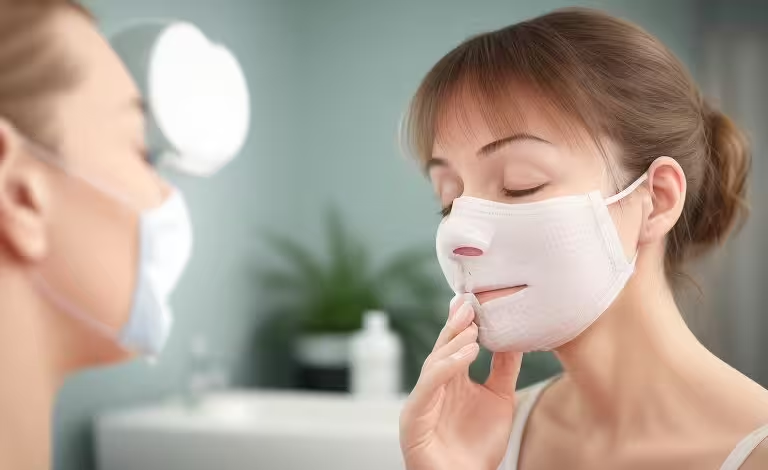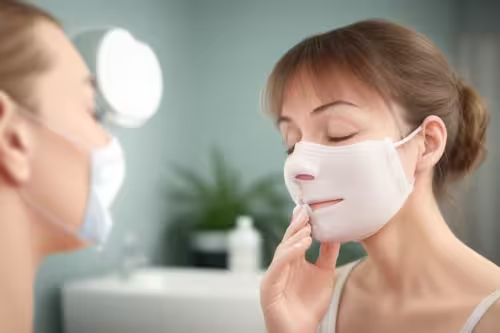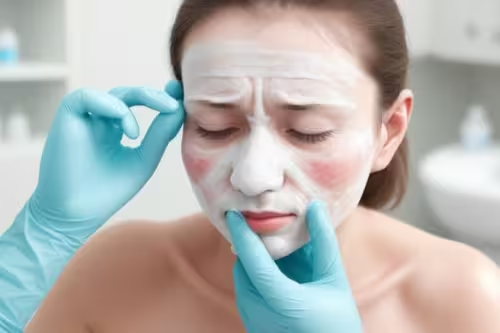

Atopic Dermatitis, also known as eczema, is a common skin condition that affects many people. It can appear anywhere on the body but is often found around the nose. This area is particularly tricky to manage. In this guide, we'll explore what causes Atopic Dermatitis Around the Nose, its symptoms, and how you can treat and manage it effectively.
What is Atopic Dermatitis?
Atopic dermatitis is a long-lasting skin condition that causes dry, itchy, and inflamed skin. It often shows up alongside asthma or allergies. When it appears around the nose, it can be especially bothersome and noticeable.
Causes of Atopic Dermatitis Around the Nose
The exact cause of Atopic Dermatitis isn’t fully understood. However, it's believed that a mix of genetics, environmental factors, and an overactive immune system play a role.

Symptoms of Atopic Dermatitis Around the Nose
Symptoms can vary but often include:
- Redness and swelling
- Dry, flaky skin
- Itching and burning sensations
- Crusting and oozing
- Darker or lighter patches of skin after healing
Diagnosing Atopic Dermatitis Around the Nose
To diagnose this condition, doctors rely on a physical exam and medical history. They might look at the skin closely and ask about symptoms, triggers, and family history. Sometimes, they’ll take a small sample of skin to rule out other conditions.

Treatment Options for Atopic Dermatitis Around the Nose
1. Topical Corticosteroids
These are creams or ointments that reduce inflammation and itching. They provide quick relief and are applied directly to the affected area.
2. Moisturizers
Using moisturizers helps keep the skin hydrated. Look for products that are fragrance-free and gentle. Regular use can prevent dryness and irritation.
3. Phototherapy
This treatment uses light to reduce symptoms. It can lessen redness and inflammation and can be done at a doctor's office or with a home device.
4. Systemic Corticosteroids
In severe cases, oral or injectable steroids might be prescribed. These should be used under a doctor's supervision due to potential side effects.
5. Immunomodulators
These medications adjust the immune system to reduce inflammation. They come in topical and oral forms and can help manage more stubborn cases.
6. Biologics
Biologics are newer treatments that target specific parts of the immune system. They are usually given as injections and can help reduce severe symptoms.
Lifestyle Changes to Manage Atopic Dermatitis Around the Nose
Living with atopic dermatitis around the nose can be tough, but making some lifestyle changes can really help. Here are some simple tips to manage and reduce your symptoms:
Avoid Irritants
Stay away from harsh soaps, detergents, and fragrances. These products can make your skin condition worse. Instead, choose products made for sensitive skin. Look for labels that say “fragrance-free” and “hypoallergenic.”
Wear Protective Clothing
When dealing with potential allergens or irritants, it's a good idea to use protective clothing. Wear gloves and masks, especially when cleaning, gardening, or handling chemicals. This can help protect your skin from flare-ups.
Practice Good Hygiene
Keeping your hands clean is essential. Wash your hands regularly and avoid sharing personal items like towels and makeup. This can help reduce the risk of infection and prevent the condition from spreading.
Manage Stress
Stress can make atopic dermatitis symptoms worse, so finding ways to relax is important. Try techniques like meditation and deep breathing. Regular exercise can also help reduce stress and improve your overall well-being. Finding a hobby or activity you enjoy can also be a great way to unwind.
Stay Hydrated
Drinking plenty of water is good for your skin. Staying hydrated helps keep your skin moist and can reduce the severity of your symptoms.
Maintain a Healthy Diet
Eating a balanced diet rich in fruits, vegetables, and healthy fats can support your skin's health. Foods high in omega-3 fatty acids, like fish and flaxseeds, can help reduce inflammation.
Get Enough Sleep
Getting enough rest is crucial for your body to heal and repair itself. Aim for at least 7-8 hours of sleep each night to help manage your symptoms.
Moisturize Regularly
Keep your skin well-moisturized to prevent dryness and irritation. Use gentle, fragrance-free moisturizers and apply them regularly, especially after washing your face.
Avoid Extreme Temperatures
Extreme hot or cold temperatures can trigger symptoms. Protect your skin by avoiding long hot showers and using humidifiers in dry weather.
By following these lifestyle changes, you can better manage atopic dermatitis around your nose and improve your quality of life. Always consult with your healthcare provider to develop a personalized plan that works best for you.
Managing Atopic Dermatitis Around the Nose can be challenging, but with the right approach, you can alleviate symptoms. By understanding the causes and symptoms, and by using appropriate treatments and lifestyle changes, you can improve your skin's health and your overall quality of life. Work closely with your healthcare provider to create a treatment plan that's right for you. Remember, with proper care, you can control your Atopic Dermatitis and live comfortably.


